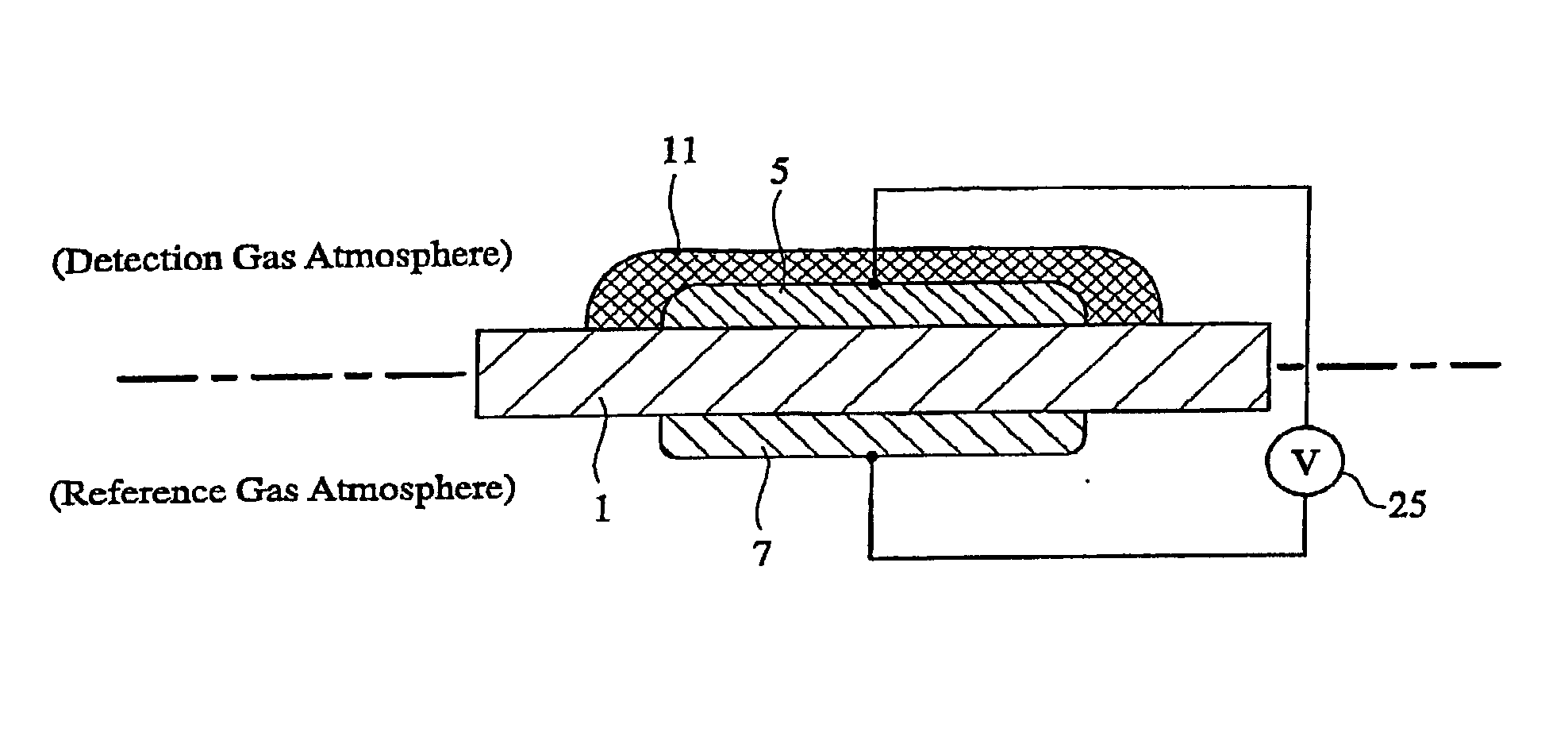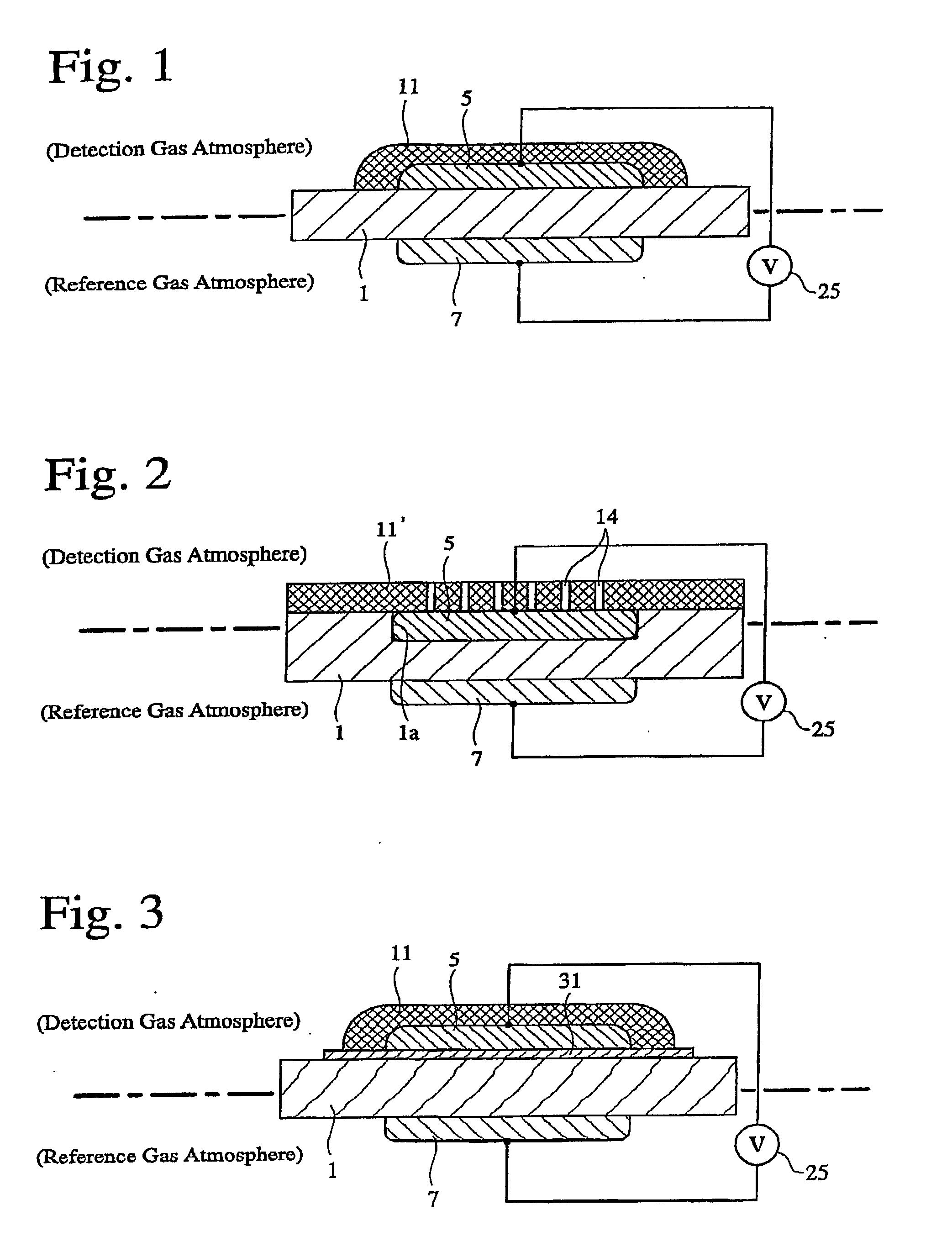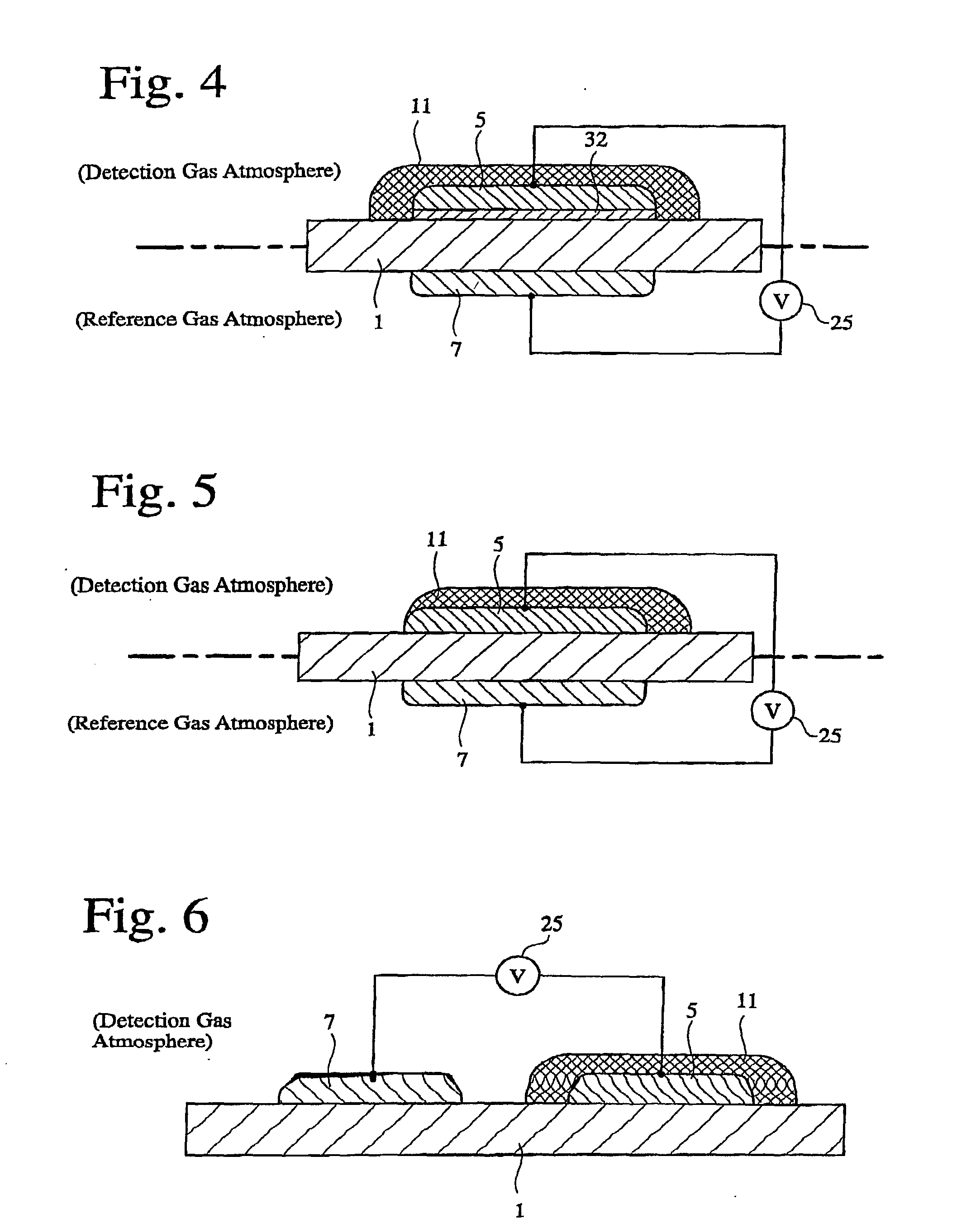Gas-detecting element and gas-detecting device comprising same
a gas detection element and gas detection technology, applied in measurement devices, instruments, scientific instruments, etc., can solve the problems of difficult control of the bonding stability of the electrode interface, peeling and cracking of the interface, and lowering the gas sensitivity, so as to achieve excellent bonding stability of the interface, stable sensitivity, and excellent response performance
- Summary
- Abstract
- Description
- Claims
- Application Information
AI Technical Summary
Benefits of technology
Problems solved by technology
Method used
Image
Examples
examples 1-8
[0186] Samples of NOx gas-detecting elements (NOx sensors) having the structure shown in FIG. 1 were produced, in the same manner as in Reference Example 1 except for using an Ir--Rh (5% by mass) alloy, a Pt--Rh (3% by mass) alloy, Cr.sub.2O.sub.3 or NiCr.sub.2O.sub.4 to form a NOx-sensing electrode 5 on each solid electrolyte green sheet, and then screen-printing a material shown in Table 2 thereon to form an electrode-coating layer 11 having an average thickness of 15 .mu.m and a porosity of 30%. The reference electrode 7 was not covered by the electrode-coating layer.
[0187] Each of the resultant sensor samples was set in a quartz pipe and held in an electric furnace, which was controlled at an atmosphere temperature of 600.degree. C. By an accelerated deterioration test in which each sample was exposed to a detection gas containing 100 ppm of NO.sub.2 gas and 5% by volume of oxygen, the balance being nitrogen, the detection performance of each sensor sample was examined. An outpu...
examples 9-16
[0190] As shown in FIG. 2, with a NOx-sensing electrode 5 fixed in a recess 1a of a solid electrolyte substrate 1, a NOx sensor having a structure in which an electrode-coating layer 11' made of a solid electrolyte having gas-diffusing pores 14 was formed on an upper surface of the NOx-sensing electrode 5 by the following procedures: First, the NOx-sensing electrode 5 was formed in the recess 1a formed in advance in the solid electrolyte substrate 1 by a screen-printing method. A plurality of gas-diffusing pores 14 were formed in a zirconia green sheet having a predetermined thickness to form a green sheet for the electrode-coating layer 11'. A green sheet for the electrode-coating layer 11' was placed on the solid electrolyte substrate 1 such that the gas-diffusing pores 14 were positioned above the NOx-sensing electrode 5, and the resultant assembly was pressed with lead wires inserted. The other procedures than these steps were the same as in Reference Example 1. The reference el...
examples 17-28
[0194] Samples of NOx sensors having the structures shown in FIGS. 3, 4, 6, 8-10 were produced. Cr.sub.2O.sub.3 or NiCr.sub.2O.sub.4 was used for a sensing electrode, and a zirconia solid electrolyte containing 12 mol % of CeO.sub.2 was used for an electrode-coating layer.
[0195] Sensor samples having the structure shown in FIG. 3 were produced, in the same manner as in Reference Example 1 except that a zirconia solid electrolyte containing 14 mol % of CeO.sub.2 was screen-printed on a green sheet for a solid electrolyte substrate, to form an electrode underlayer 31 having a porosity of 10% and a thickness of 3 .mu.m, and that after forming a NOx-sensing electrode 5, an electrode-coating layer 11 having a porosity of 30% and an average thickness of 15 .mu.m was formed by a screen-printing method.
[0196] Sensor samples having the structure shown in FIG. 4 were produced, in the same manner as in Reference Example 1 except for forming an alumina print layer as an electric insulating laye...
PUM
| Property | Measurement | Unit |
|---|---|---|
| porosity | aaaaa | aaaaa |
| thickness | aaaaa | aaaaa |
| porosity | aaaaa | aaaaa |
Abstract
Description
Claims
Application Information
 Login to View More
Login to View More - R&D
- Intellectual Property
- Life Sciences
- Materials
- Tech Scout
- Unparalleled Data Quality
- Higher Quality Content
- 60% Fewer Hallucinations
Browse by: Latest US Patents, China's latest patents, Technical Efficacy Thesaurus, Application Domain, Technology Topic, Popular Technical Reports.
© 2025 PatSnap. All rights reserved.Legal|Privacy policy|Modern Slavery Act Transparency Statement|Sitemap|About US| Contact US: help@patsnap.com



